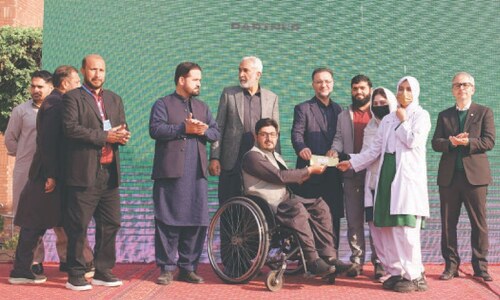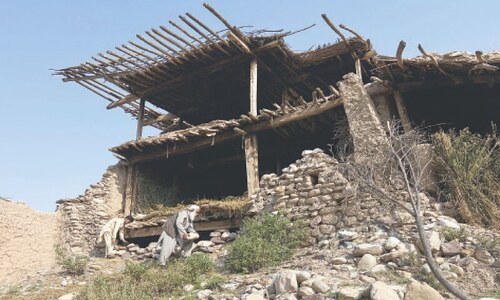
SWAT: The archaeologists claim to have discovered remains of a Brahmanical or Deval temple, a water reservoir and a Ghaznavid military watchtower dating back to the Gandhara-era atop the Ghwandai hill in the ancient town of Bazira in Barikot-Swat.
The archaeologists clarified many points regarding the cultural sequence of the top of the Ghwandai (the acropolis of the ancient Bazira).
In the recent discovery, the Italian Archaeological Mission of ISMEO and Ca’ Foscari University of Venice discovered the water reservoir for the Shahi temple after part of which was exposed last year.
“Water was brought from the nearby river to the hilltop through a deep vertical natural defile (c. 50 metre deep) whose exit is located close to the tank. The four-meter walled water reservoir is partly cut on the rocky surface and surrounded by a huge walled precinct built upon the ruins of the Kushana monumental acropolis, which, when the Shahi occupied the hilltop, had fallen into disrepair,” Dr Luca Maria Olivieri, Director Italian Archaeological Mission in Pakistan, said. He added that two monumental artificial terraces, well-visible from kilometers away, a true landmark of the historical landscape of the Kushans, were also discovered.
“The eastern terrace was meant to house a Buddhist sacred area. On the ruins of the latter the Hindu Shahis built their 24-metre-long temple while the western terrace revealed the past traces of the Indo-Greek wall circa 150BCE), as well as traces of the earlier proto-historic occupation of about 1400-800 BCE,” he said, adding that a Ghaznavid military watchtower to control the territory on the summit was also exposed.
Dr Luca Olivieri said the new discovery was very important as now the archaeologists and historians got the complete sequence going from Kushan to Hindu Shahi and ultimately to Ghaznavid period.
Dr Michele Minardi, another archaeologist, said that the newly-excavated site was of real importance for different periods in the past. “Strategically, the top of the Ghwandai hill is very important from where the upper as well as the lower parts of Swat can easily be monitored. Therefore, it was used as part of the military garrison to keep control on the entire region in the past,” he said, adding the new discovery was an important addition to the archaeological treasure of Gandhara civilisation in Swat valley.
The archaeologists said the discovery of the Brahmanical or Deva temple in Swat was a rare example in the Gandhara period which could lead to interesting new information.
Published in Dawn, November 22nd, 2020


































